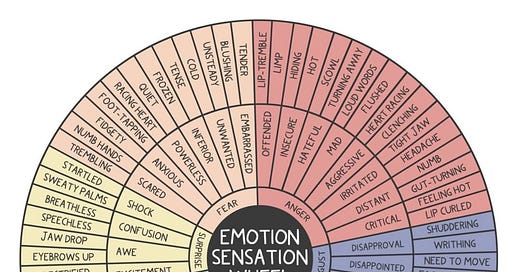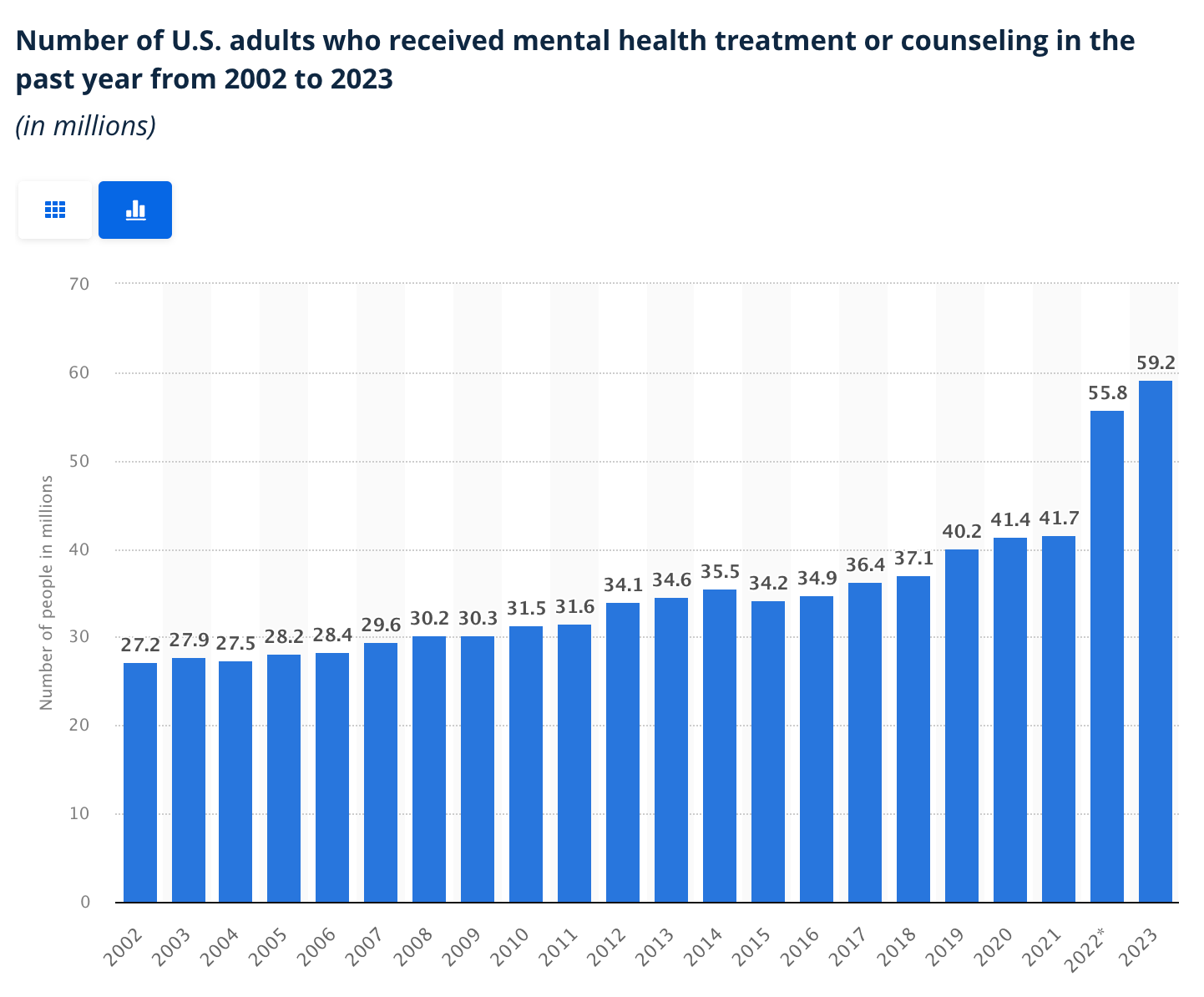There’s a lot of new folks here, welcome to the world of The Pollinatr! 🤗 The other day someone asked me what the The Pollinatr means. This newsletter is all about dropping insights and ideas into your mind (aka pollinating) that will spark new ways for you to connect your brand to culture. And, to scratch that curiosity itch we all have in common.
On a more serious note, my heart goes out to every single person impacted by the catastrophic flood in Texas. I had many friends go to Camp Mystic growing up and friends of friends still looking for their children, a parent’s worst nightmare. The Hill Country is such a special place and it’s heartbreaking to see pictures and hear stories of the devastation that has taken place. Here is a prayer to pray and some ways to donate. 🧡
Somatics
How does your body feel right now? Tense? Relaxed? Hot? Tight? Heavy? It’s a question many people are starting to pay attention to through the practice of somatics. And it’s not just some new "woo woo” buzzword - somatics is feeling it’s way into culture across therapy, fitness, dating, and the corporate world.
For years I would ignore signals from my body like signs of of exhaustion, stress, and anxiety because I thought pushing through and working harder and longer was just what you were supposed to do. This was in my era of being a staunch hustle culture subscriber when I worked around the clock and bragged at how many airline points I racked up from business travel. Very Millennial of me. 🙄
Fast forward a decade (where I had finally discarded that mindset thank goodness) and I did business coaching with Cammie Dunaway (ex-CMO of Duolingo and Yahoo turned Board advisor and business coach). She introduced the concept of Somatics to me and it unlocked a whole new world of understanding about how to regulate your nervous system and deal with workplace stress and trauma.
What is Somatics?
Somatics is the study and practice of body awareness. Specifically, experiencing your body from the inside out and noticing how it feels. Somatics exercises help you recognize how sensations, movements, and patterns of tension or relaxation in your body connect with your emotions, thoughts, and overall well-being.
Cammie shared that “Somatics is figuring out how to relate and listen to your body differently than we listen to our mind. Somatics is about turning your mind down and your awareness of your body up.”
This was an explainer video I found and here’s a helpful chart from therapist and artist Lindsay Braman. The way you use the chart is you work from the outside in - identify the sensation in your body then move to the feeling and then the core emotion.
Lindsay shares that “In my professional work, I return with clients over and over to the work of listening to the signals their body is bringing them. So often, making these connections between felt sensations and the message they are speaking plays a huge role in growth and healing.”
How is Somatics showing up across culture?
In Therapy: Many therapists are starting to leverage somatic techniques like Hakomi or EDMR (Eye Movement Desensitization and Reprocessing) in their treatments. The difference between traditional therapy and somatic therapy relates to the starting point: “Traditional therapy uses a top-down approach, where the focus is on the cognitive (like challenging and reframing your thoughts, for example). Somatic therapy uses a bottom-up approach -- where the focus is on the bodily experience.”
The benefits are many: Stress reduction, trauma release, emotional awareness, and pain reduction. “The body is the site through which we experience life, where we take action from. When we try to circumvent the body by only working through talk or thought, we end up losing out on a lot of information: understanding our reactivity, what we really long for, the opportunity to do things that maybe we haven’t done that would allow us to feel.”
In Fitness: Somatic exercises like Diaphragmatic breathing, Cathartic movement aka Shaking it out (Taylor would be proud), and mindful walking are practices to weave into your workouts. Peloton has a series of classes related to somatics like yoga, breathwork, body scan meditations, pilates, and dance.
In Dating: The Feels is a new dating experience popping up across the country that “offers an alternative to online dating and typical singles mixers. The in-person dating event weaves meditation, talking prompts and somatic exercises to help participants connect on a deeper level.”
In the corporate world: Business coaching is starting to include Somatics as a part of their approach, helping executives with their body language and physical presence in the workplace. Mind Body Somatics shares this list of examples of unconscious somatic shapes (I am guilty of many of these):
Furrowing your brow while listening to others (can create the sense that you are distrusting or not present with the person you are listening to)
Glaring or narrowing your eyes (can give others the sense you are angry or unwelcoming)
Holding your eyes wide open (produces the assessment you are overwhelmed or easily surprised)
Tightening your mouth and jaw (can produce the sense you are holding back what you want to say)
Folding your arms (can create a sense of distance)
In my business coaching with Cammie, one of my favorite somatic exercises was getting into a position that was a physical representation of how I felt stuck. I really enjoyed it because it got me out of my head and into my body. It helped me to see from the outside in, experience it in a new way, and reframe why I felt stuck.
Cammie talks about how mindfulness and breathing is about getting your emotions under control, whereas somatics is just acknowledging that you have emotions and feelings.
She told me about a somatic workshop for people with anger who had a hard time expressing anger. “Ultimately, anger is energy and it is not inherently bad - it's there to protect your dignity or someone else’s - you don’t want to stuff it in, you need to find ways to express and process it. The workshop had people doing things like putting a pillow on the ground and stomping it as a way of releasing energy.” (Honestly this sounds like a lot of fun lol).
Why is this shift towards Somatics happening? The first ground was optimizing our minds, now we’re optimizing our bodies.
Mental health destigmatization and the rise in anxiety. In just two generations, there has been a drastic shift towards people being open about their mental health and seeking therapy. A lot of people in my parents generation had no interest in therapy and some thought it was downright dumb. Now, 59M US adults are participating in some type of therapy, per Statista, and millions are practicing mindfulness via meditation apps.
According to the American Psychiatric Association, “In 2024, 43% of adults say they feel more anxious than they did the previous year, up from 37% in 2023 and 32% in 2022. It’s no surprise to me that therapy and meditation has seen a rise alongside the rise in anxiety as they are certainly linked.
The wellness industry boom and our desperate desire for feeling better: I wrote about Wellness five years ago and the insane amount of money being poured in the wellness industry has only increased. In 2017, Global Wellness Institute reported the industry was worth $4.2 trillion, fast forward to 2023 and now it’s $6.3 trillion and is projected to grow to nearly $9 trillion by 2028. It’s clear that the whole world is trying to find ways to feel better at any cost.
The last territory to optimize - our bodies: It all started with the Fitbit where you could track how many steps you took in a day, but now you can track everything from sleep patterns to blood sugar levels to when you’re ovulating with wearable technology like Oura Rings, Whoop bracelets, and wearable glucose monitors. Body awareness is on the rise and with that comes increased interest in how our body sensations impact our mental well being.
What does this shift from mindfulness to embodiment mean for brands? People are open to feeling your brand, not just experiencing it.
Sensory marketing exists, aka tapping into people’s senses of sight, sound, smell, taste, touch, but what about FEELING? You could argue that’s a different level of sensory. There are a TON of really interesting opportunities for brands.
Think Meditation apps like Headspace and Calm, fitness brands like Ladder or Equinox, or B2B brands like Zoom or Slack - there is an entire new territory for you to explore with somatic marketing (trademarking this - you heard it here first!). Here are some ideas for you to consider for your next campaign:
Keep reading with a 7-day free trial
Subscribe to The Pollinatr to keep reading this post and get 7 days of free access to the full post archives.







